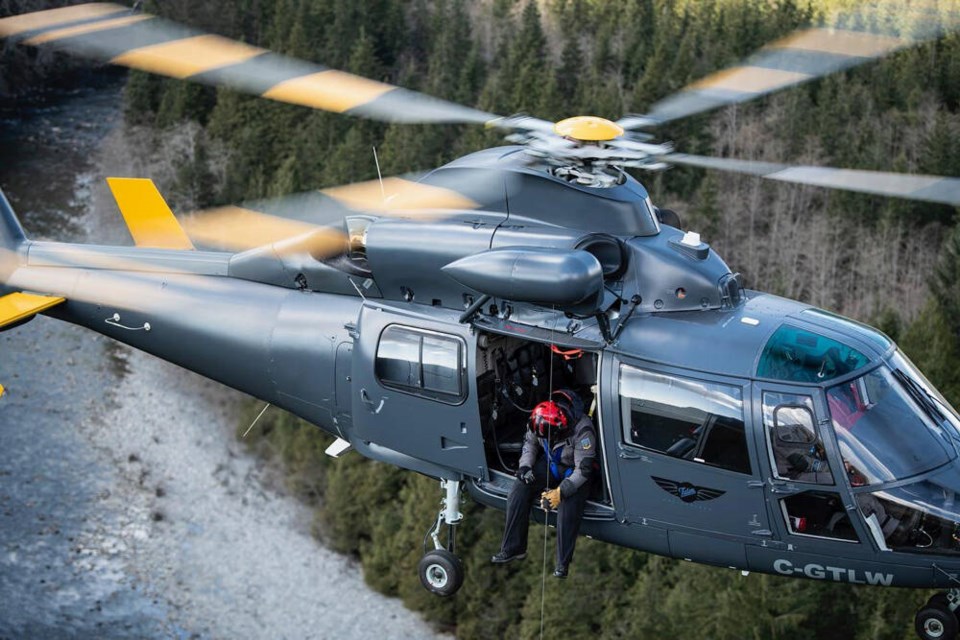It’s another one for North Shore Rescue’s record books.
The team pulled off their fastest ever helicopter rescue, Saturday (July 2), after a report of a hiker having cardiac issues on St. Mark’s Summit.
The team got the call around 9:20 p.m. from a group of hikers reporting a friend in his 20s experiencing an elevated heart rate.
It was lucky that a Talon Helicopter pilot was still at the hanger at YVR and could get the rotors going, said Jim Loree, North Shore Rescue search manager.
“Our goal was to get him out of there as fast as possible,” Loree said. “We basically launched right away knowing that we had hardly any time to get this rescue done because of darkness.”
Rescue volunteers met the Talon helicopter at the Capilano Gate SAR station and headed straight for St. Mark’s. From the air, they were able to quickly lower down a rescuer, get the man strapped onto a back board and lifted back to the chopper. They had doctors and paramedics waiting at Cap Gate.
“It was around 38 minutes from when we were called to getting the fellow handed over to the ambulance,” Loree said. “That’s definitely a record. We’ve never been able to do it that quickly.”
The record was only made possible by the relatively recent addition of a Dauphin helicopter to Talon's fleet in late 2020. It is equipped with a hoist that allows rescuers to be lowered down directly to where they are needed and lifted back up.
Using their familiar yellow A Star helicopter, the team would have had to use a long line, which requires them to first do a reconnaissance flight around the area, then return to the nearest search and rescue station to attach the line and rescuers before heading back to the lost or injured subject in the backcountry and getting them harnessed in.
Loree couldn’t say exactly what the previous record for a helicopter rescue was, but long-line missions typically take at least an hour and 15 minutes.
“That’s one of the beauties of the hoist,” he said. “It makes it a lot more expeditious.”
With the sun setting, the hiker did the right thing by having his friends call for help as soon as it became apparent he was in trouble, Loree said.
Currently, the team has provincial approval to conduct helicopter searches in darkness using night vision goggles, but despite much lobbying, they still do not have permission to use their hoist to rescue people after dark.
“It would have turned into a much longer rescue just because there would have been a ground response at that point,” Loree said. “We basically had five minutes of light to spare … to legally fly and do that kind of rescue.”
Anyone planning to go into the backcountry should be well prepared, both with the right gear and knowledge, Loree stressed.
“Evaluate that with your fitness level and the amount of time it’s going to take you to complete,” he said. “Be aware that there’s still snow up high, which could make the hike take longer.”

